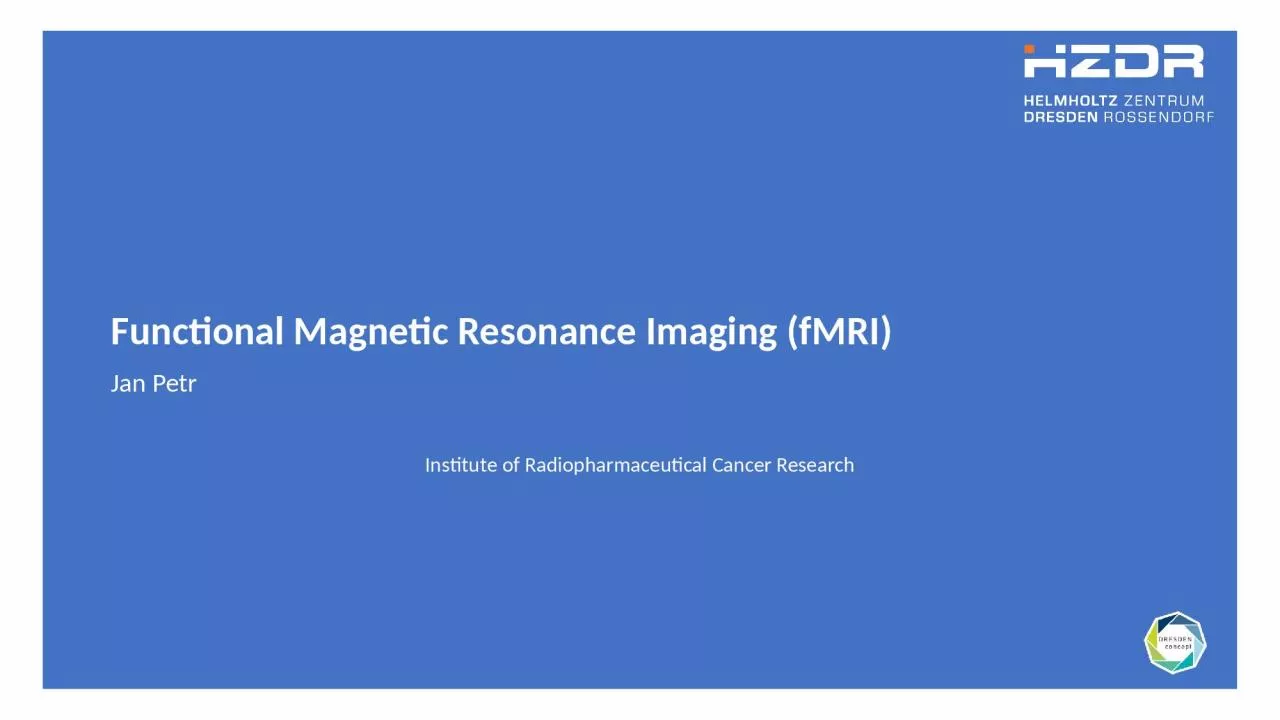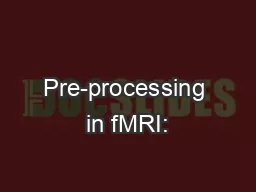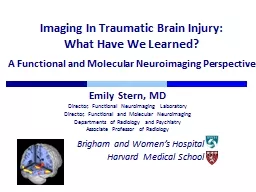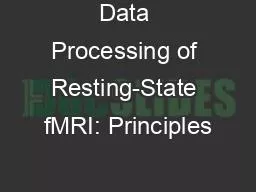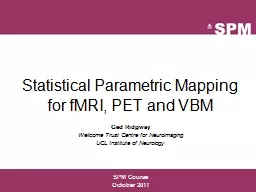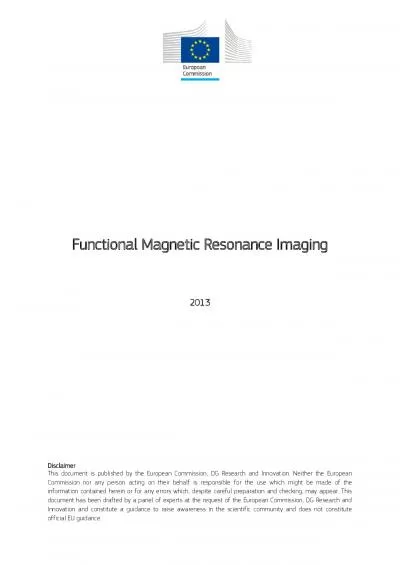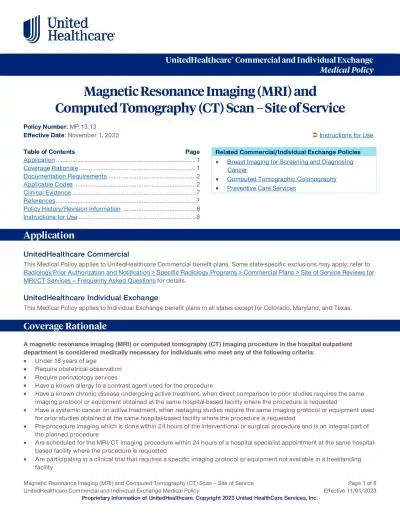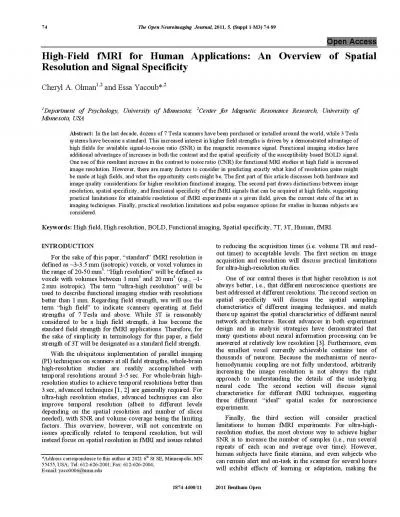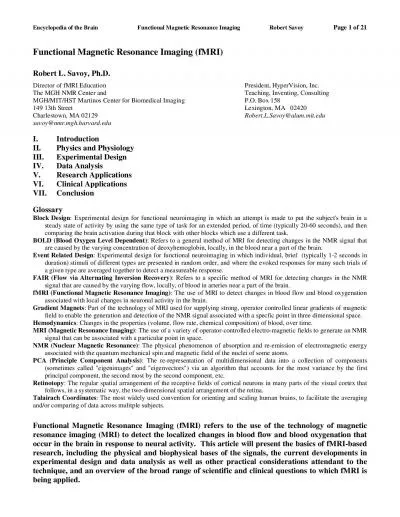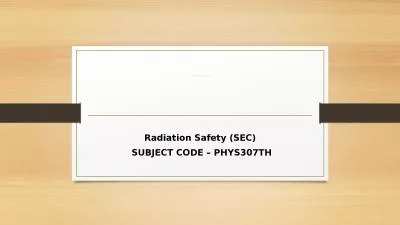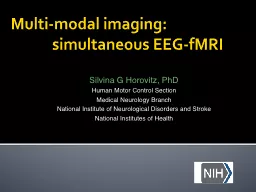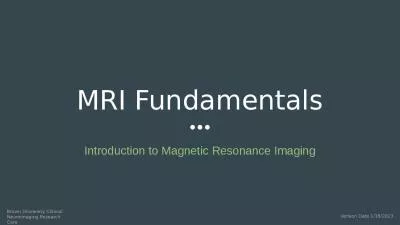PPT-Functional Magnetic Resonance Imaging (fMRI)
Author : barbara | Published Date : 2024-03-13
Jan Petr MRI quick summary Spin property of hydrogen atoms Using strong B 0 magnetic field 15 T 3T clinical scanners 7T experimental scanners MRI quick summary
Presentation Embed Code
Download Presentation
Download Presentation The PPT/PDF document "Functional Magnetic Resonance Imaging (f..." is the property of its rightful owner. Permission is granted to download and print the materials on this website for personal, non-commercial use only, and to display it on your personal computer provided you do not modify the materials and that you retain all copyright notices contained in the materials. By downloading content from our website, you accept the terms of this agreement.
Functional Magnetic Resonance Imaging (fMRI): Transcript
Download Rules Of Document
"Functional Magnetic Resonance Imaging (fMRI)"The content belongs to its owner. You may download and print it for personal use, without modification, and keep all copyright notices. By downloading, you agree to these terms.
Related Documents

